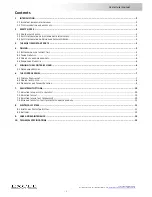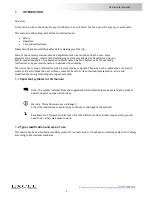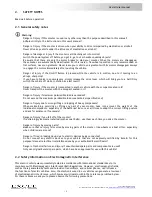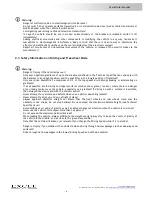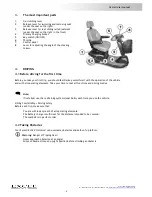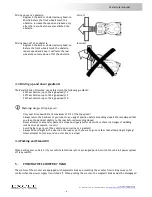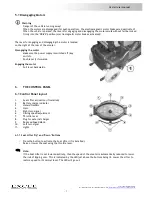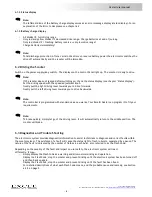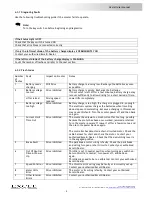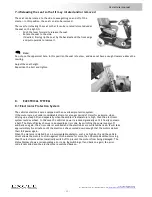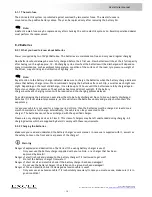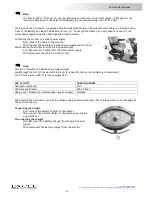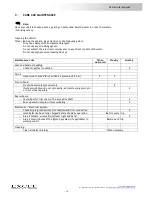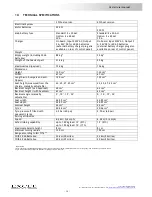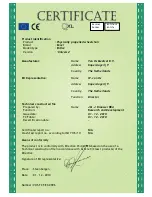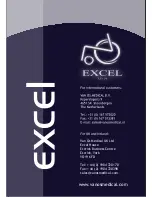
~ 12 ~
Overall user manual
© 2011 VAN OS MEDICAL UK LTD.
Tel. +44(0)1757 701177, Fax +44(0)1757 706011, E-mail:
,
www.vanosmedical.com
8.1.1 The main fuse
The entire electric system is protected against overload by two master fuses. The master fuses are
mounted on the positive battery cables. They can be replaced only after removing the battery lid.
Note:
A defective main fuse may be replaced only after checking the entire electric system. An Excel® specialised dealer
must perform the replacement.
8.2 Batteries
8.2.1 What you need to know about batteries
Power is supplied by two 12V gel batteries. The batteries are maintenance-free and only need regular charging.
New batteries should always be once fully charged before their first use. New batteries will be at their full capacity
after having run through approx. 10 - 20 charging cycles. How fast the batteries will be discharged will depend on
many circumstances, such as ambient temperature, condition of the surface of the road, tyre pressure, weight of
the driver, way of driving and utilisation of lighting, etc.
Note:
Pay attention to the battery charge indicator! Make sure to charge the batteries when the battery charge indicator
shows that battery charge is low. We recommend charging the batteries after each trip, as well as each night over
night. Depending on the level of discharge, it can take up to 12 hours until the batteries are fully charged again.
Protect your charger for sources of heat such as heaters and direct sunlight. If the battery
charger overheats, charging current will be reduced and the charging process delayed.
To avoid damaging the batteries, never allow them to be fully discharged. Do not drive on heavily discharged
batteries if it is not absolutely necessary, as this will strain the batteries unduly and greatly shorten their life
expectancy.
In case your vehicle is not used for a longer period of time, then the batteries must be charged at least once a
month to maintain a full charge. Alternatively, the vehicle can stay connected to the
charger. The batteries cannot be overcharged with the specified charger.
Please use only charging devices in Class 2. This class of chargers may be left unattended during charging. All
charging devices which are supplied by Excel® comply with these requirements.
8.2.2 Charging the batteries
Make sure you read and understand the battery charger's user's manual, in case one is supplied with it, as well as
the safety notes on the front and rear panels of the charger!
Warning
Danger of explosion and destruction of batteries if the wrong battery charger is used!
-
Only ever use the battery charger supplied with your vehicle, or a charger that has been
approved by Excel®!
Danger of electric shock and damage to the battery charger if it is allowed to get wet!
-
Protect the battery charger from water!
Danger of short circuit and electric shock if the battery charger has been damaged!
-
Do not use the battery charger it has fallen on the ground or been damaged!
Danger of fire and electric shock if a damaged extension cable is used!
-
Only ever use an extension cable if it is absolutely necessary! In case you must use one, make sure it is in
good condition!


